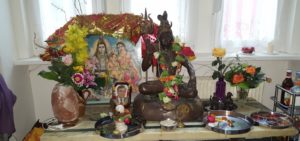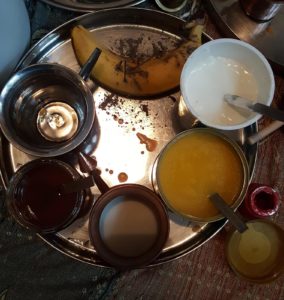What we celebrate and why: Maha Shivaratri – The Great Night of Shiva
Maha Shivaratri is an important holiday in Hinduism. For devotees of the god Shiva, it is the highest holiday, the holiest of all nights. In the Hindu calendar, the holiday takes place on the 14th day of the month of Phalguna, which corresponds to sometime around the end of February/beginning of March. In 2020 it falls on March 4.
Agrati Khajuria, Dialogueperspectives participant, explains:
On that day, we devote our prays to the god Shiva. One normally prays all night using the verse Om Namah Shivaya or the Maha Mrityunyaya mantra:
oṃ tryambakaṃ yajāmahe sugandhiṃ puṣṭivardhanam urvārukam iva bandhanān mṛtyor mukṣīya māmṛtāt
There are various reasons why we celebrate Maha Shivaratri on that exact day. As I learned it, there is a fortuitous positioning of the planets that unleashes a certain “natural’ energy that us humans can absorb and use. It is also said that the day is the darkest of the month. The legend states that Shiva married his wife Parvati on that day. But there are also many other legends connected with the day.
It is recommended that you fast and then break the fast at sunrise. This fasting is often combined with meditation. You also carry out Abhisheka, i.e., libations are poured onto a representation of Shiva. The Shiv Lingam – an abstract representation of Shiva – is poured over with honey, milk, sugar, or black seeds. Fruits and flowers are also offered as a sacrifice.

Maha Shivaratri

Abhishekam- honey, yoghurt, ghee, milk, water

yoghurt

ghee

milk

water

Bengal quince

The shivling after the Abhisheka

Agrati Khajuria, DialoguePerspectives participant
